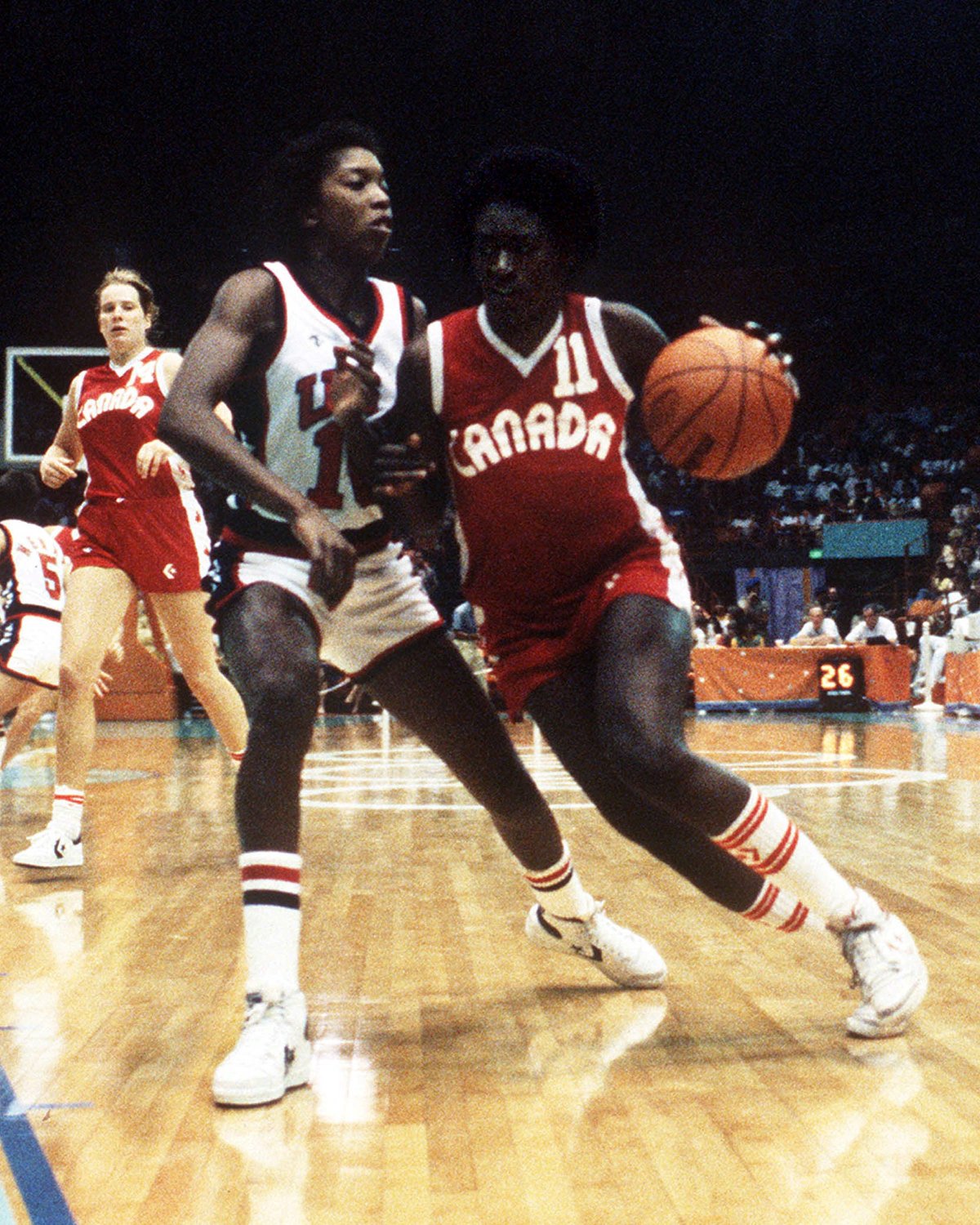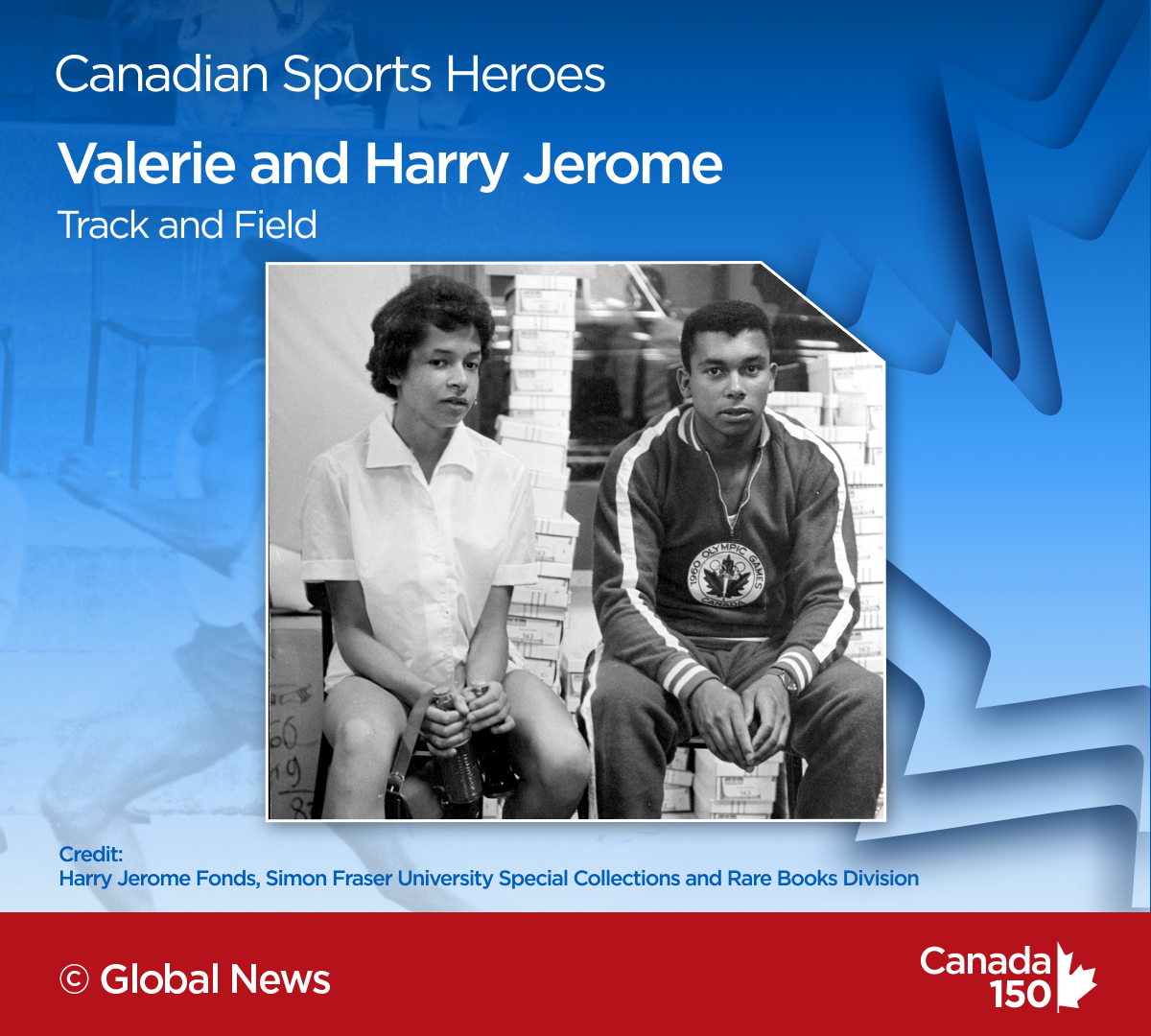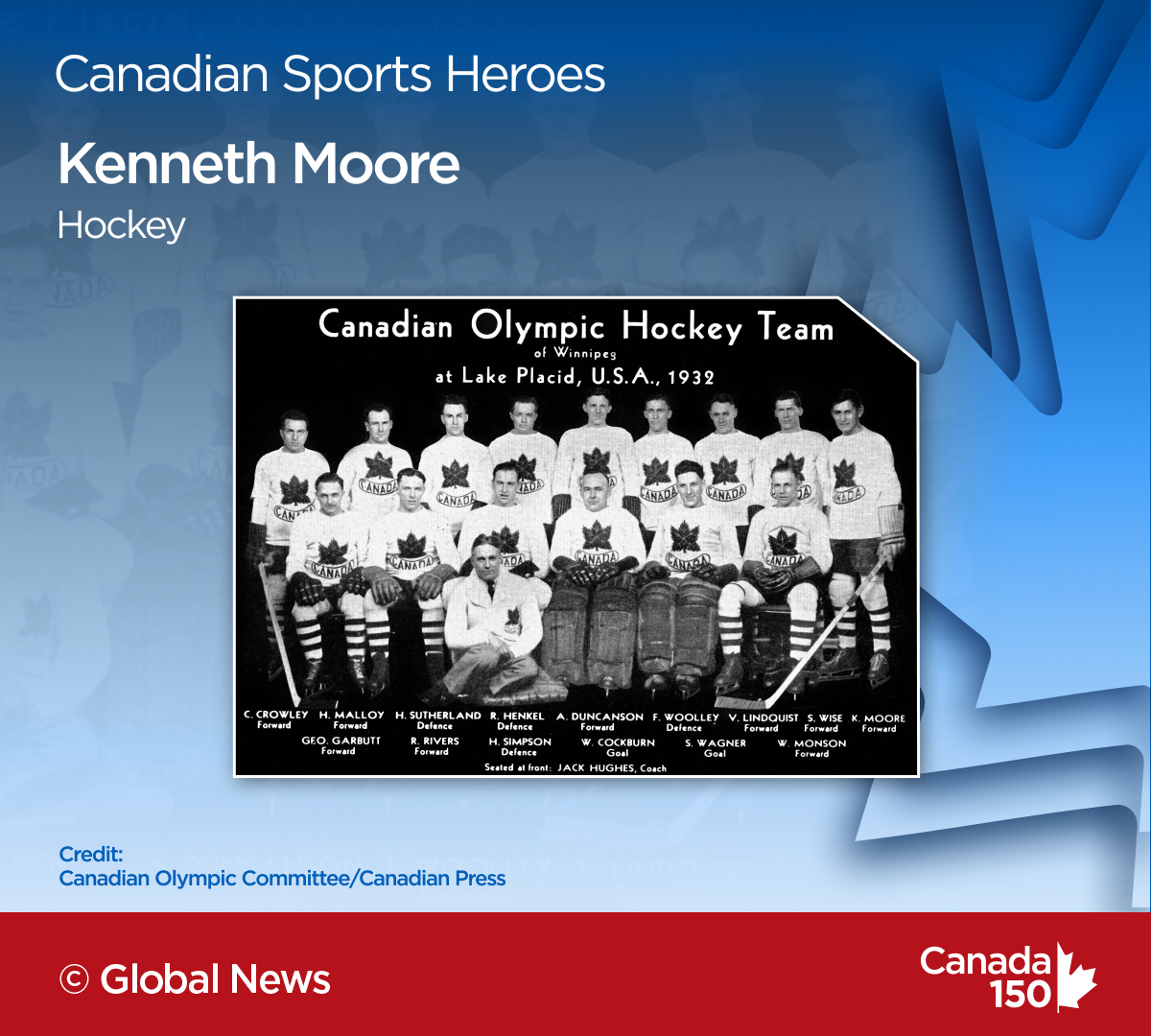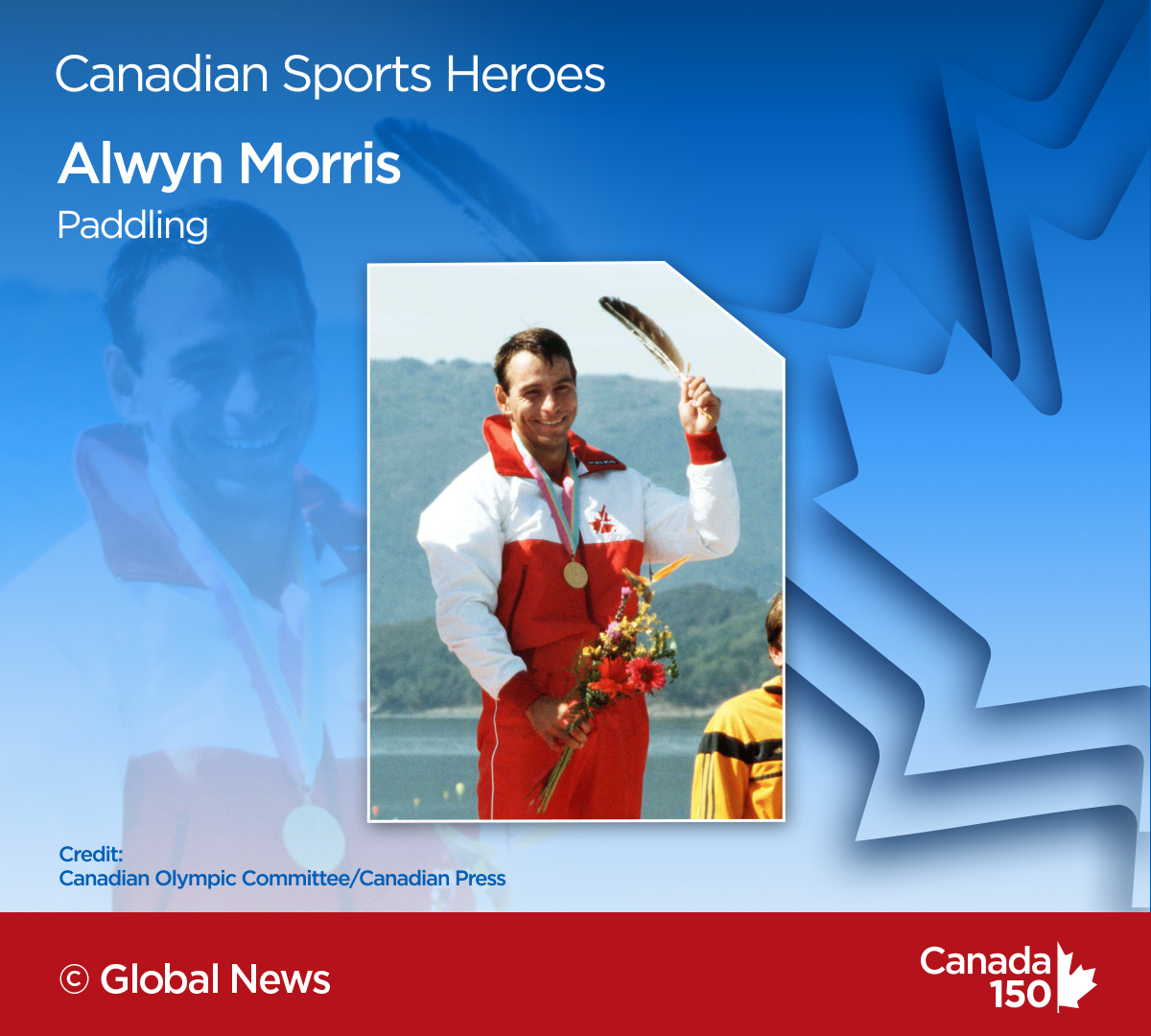What makes a hero?

Persistence. Endurance. And the will to triumph over adversity.
Canada 150 stories on Globalnews.ca:
But adversity, of course, comes in many forms. And many who’ve faced it aren’t always the first who come to mind when listing Canada’s greatest athletes.
Here are 9 great Canadian athletes to honour for the country’s 150th birthday:
Tom Longboat
Tom Longboat was one of the world’s most celebrated athletes prior to the First World War, according to The Canadian Encyclopedia.
A member of the Onondaga people, he was born at Six Nations of the Grand River First Nation Reserve near Brantford, Ont., in 1887.
He trained for races in unconventional ways, running on the roads of his reserve or into cities such as Burlington and Hamilton, and carefully observing rest and recovery.
His training regimen put him at odds with managers, and he was constantly criticized, with his detractors sometimes boiling over into racist remarks.
But it’s difficult to argue with Longboat’s results. He won the Hamilton “Around-the-Bay” race in 1906, the Boston Marathon in 1907, and the world professional marathon championships in New York City in 1909.
He enlisted in the Canadian Expeditionary Force in February 1916 and spend his time during the First World War as a dispatch carrier, running messages between units, according to Veterans Affairs Canada.
Wounded twice in the war, at one point he was declared dead, but he later came back to Canada in 1919 and became a member of the Canadian Sports Hall of Fame.
Raymond Lewis
Raymond Lewis was born in Hamilton in 1910, three generations removed from escaped slaves.
With athletic opportunities for black athletes limited to running in the early 20th century, he devoted himself to the sport, running along train tracks while he worked as a porter with the Canadian Pacific Railway, according to Athletics Ontario.
That training would be fruitful for a man who would go on to win a bronze medal with the men’s 4×400-metre relay team at the 1932 Olympics, making him the first Canadian-born black athlete to hit the podium at the Games while representing the country. He also won a silver medal at the 1934 British Empire Games.
Lewis received the Order of Canada in 2001. He died two years later.
John ‘Army’ Howard
John Armstrong “Army” Howard’s path to glory was a journey through a Canada that treated black athletes as outsiders.
Raised in Winnipeg, Howard qualified for the 1912 Olympics in Stockholm, but making it there wasn’t easy, according to the Canadian Army.
As the Canadian Olympic team gathered in Montreal before going to the Games, Howard wasn’t allowed to stay in the same hotel as white athletes, nor even eat with them in the same dining room as they took a boat to Europe.
He developed a stomach sickness at the Games and ultimately didn’t win a medal. But he had beaten all three medallists at track meets prior to the Olympics.
Howard won all of his races at the Canadian Outdoor Championships the following year.
He was drafted into the Canadian Expeditionary Force to serve in the First World War starting in 1918, before he transferred to the Canadian Reserve Batallions.
In 1920, he and his fiancee Edith Lipscomb returned to Canada with a baby girl in tow, and faced racism as an interracial couple. People threw stones at them in an effort to drive them away from Ste. Rose du Lac, where they had hoped to settle.
Today, Howard is remembered as Canada’s first black Olympian. Two of his grandchildren went on to be sprinters in their own right.
Valerie and Harry Jerome
While Howard never managed to medal at the Olympics, his legacy carried on through his grandchildren, Valerie and Harry Jerome.
Valerie set track records when she was 15 years old and won a bronze medal at the Pan American Games. Just a year later she would compete in women’s 100-metre and women’s 4×100-metre competitions at the 1960 Olympic Games in Rome.
Her brother Harry qualified for the same Games in the 100-metre competition, reaching the semi-finals, but he ultimately withdrew due to injury, a decision that drew strong criticism, according to the Canadian Army.
But Harry would come back for the 1964 Olympics in Tokyo and win a bronze medal in the 100-metre race. He held the world 100-metre record for four years, and the world 100-yard record for 14 years.
Harry died of a brain aneurysm in 1982. Today, a bronze statue of him stands in Vancouver’s Stanley Park.
Valerie, meanwhile, spent a 35-year career in education in which she worked to promote Black Canadian Studies. She was part of an effort to establish a chair of Black Canadian Studies at Dalhousie University.
A bench honouring her sits right near Harry’s statue.
Sylvia Sweeney
Sylvia Sweeney was a leading member of Canada’s women’s basketball team when the sport made its debut at the 1976 Olympics in Montreal.
The team played to a sixth-place finish at that Games.
Sweeney gained some notoriety there after taking a photo of Queen Elizabeth II as she ate with Olympic athletes, but royal officials took her camera away and ruined the film, according to the book, A Sporting Chance: Achievements of African-Canadian Athletes.
When the opportunity came up to meet the Queen herself, she declined, saying that the monarch’s officials had exposed her film.
Sweeney would become the most valuable player at the Women’s World Basketball Championships in 1979. She carried the flag for Team Canada at the Pan American Games that same year.
She returned to the Olympics with her team in 1984, fighting to a fourth-place finish.
Shirley and Sharon Firth
Twins Shirley and Sharon Firth hailed from the Gwich’in First Nation and went on to compete as members of Canada’s first Olympic women’s cross-country ski team at the 1972 Games in Sapporo.
Together, they won a combined 48 Canadian championships from the late 1960s to the mid-1980s, according to The Canadian Encyclopedia.
And though they didn’t win an Olympic medal, Sharon’s placement in the women’s 5-kilometre cross-country race at the 1972 Games was still the best result in that event before it was discontinued after the 1998 Games in Nagano.
Kenneth Moore
Hockey player Kenneth Moore is believed to be the first indigenous athlete to win a gold medal for Canada.
He was born in Balcarres, Sask. in 1910, and was a member of the Peepeekisis First Nation, according to the Encyclopedia of Saskatchewan. His family later moved to Regina after two brothers died while attending a residential school.
Moore’s parents sacrificed much to nurture his athletic abilities, which he showed in rugby, baseball and lacrosse — but hockey would make him a champion.
He scored the winning goal to win the Memorial Cup with the Regina Pats in 1930 and later played with the Canadian team at the 1932 Olympics in Lake Placid, where they won gold.
Moore would later experience tragedy as four of his seven siblings died before they became adults.
He continued with hockey, coaching the junior St. Boniface Athletics to a divisional championship in 1942 and 1943, and the St. James Canadians to a provincial junior hockey championship in 1944.
Angela Chalmers
Sioux athlete Angela Chalmers was one of Canada’s most outstanding runners in the 1990s.
Born in Shilo, Man., Chalmers moved to Victoria when she was young, according to the BC Sports Hall of Fame.
Some of her greatest success as a runner has come at various Commonwealth Games including in 1990, when she became the first woman to win the 1,500- and 3,000 metre events, according to the book Native Americans in Sports.
She would later set a Commonwealth Games record in the 3,000-metre event in Victoria in 1994, finishing in 8:32.17.
But running isn’t all that Chalmers has concerned herself with. In the late 1990s she worked to slow high school dropouts among young indigenous people.
Alwyn Morris
Kahnawake Mohawk kayak racer Alwyn Morris won a gold medal alongside teammate Hugh Fisher at the 1984 Summer Olympics in Los Angeles.
That was impressive enough on its own. But the enduring image of Morris shows him holding up an eagle feather, a symbol of life, honour and friendship, and a tribute to his indigenous heritage.
He parlayed that experience into efforts to develop sport programs for indigenous kids, and has coached sports such as canoeing, kayaking and hockey in Kahnawake, according to Indspire.

















Comments